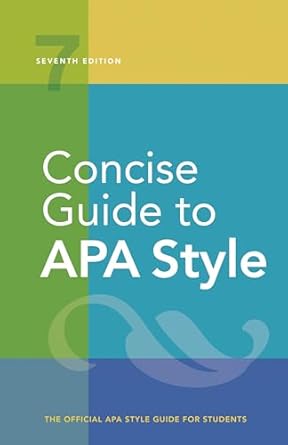[toc]
apa citation guide mastering academic citations
Concise Guide to APA Style: 7th Edition (OFFICIAL)
Page 208 Review
DOCTYPE html>
Analysis of APA Citation Guidelines in Academic Writing
This excerpt delves into the intricate details of APA (American Psychological Association) citation guidelines.
Understanding these guidelines is crucial for maintaining academic integrity and giving proper credit to sources.
The text highlights various scenarios and rules, which can initially seem overwhelming but are essential for scholarly work.
Handling Multiple Works by the Same Author
The excerpt begins by addressing how to cite multiple works by the same author. “the authors’ surnames once; for each subsequent work, give only the date.” This is a fundamental principle to avoid redundancy and maintain clarity.
Examples like “(Department of Veterans Affairs, n.d., 2017a, 2017b, 2019)” and “Zhou (n.d., 2000, 2016, in press)” demonstrate this principle in action.
The use of ‘n.d.’ (no date) is also clarified for situations where the publication date is unavailable.
Addressing Works with Abbreviated Author Lists
Another important point is the handling of works where author names are abbreviated to “et al.” “In the case of multiple works in which some author names have been abbreviated to “et al.” (see Section 8.17), place the citations in chronological order (regardless of the order in which they appear in the reference list).” This ensures a consistent and logical flow, especially when dealing with extensive lists of references.
The example provided, “(Carraway et al., 2013, 2014, 2019),” illustrates this concept effectively.
Prioritizing Relevant Citations
The excerpt also provides guidance on how to highlight the most relevant works within a given sentence: “To highlight the work(s) most directly relevant to your point in a given sentence, place those citations first within parentheses in alphabetical order and then insert a semicolon and a phrase, such as “see also,’ before the first of the remaining citations, which should also be in alphabetical order.” This is a valuable strategy for emphasizing key research and directing readers to the most pertinent sources.
The example, “(Sampson & Hughes, 2020; see also Augustine, 2017; Melara et al., 2018; Pérez, 2014),” clearly demonstrates how to implement this approach.
It allows the author to strategically guide the reader to the most important and/or recent sources first, followed by additional supporting materials.
Conciseness and Clarity in Citations
The importance of conciseness and clarity in citation is also emphasized: “Readers may find a long string of citations difficult to parse, especially if they are using assistive technology such as a screen reader; therefore, include only those citations needed to support your immediate point (for more on appropriate level of citation, see Section 8.1).” This underscores the need to be selective and avoid overwhelming the reader with unnecessary references.
The focus should always be on supporting the argument effectively and efficiently.
Consider the user experience, especially for those relying on assistive technologies.
Citing Multiple Sources Within a Narrative
Furthermore, the excerpt addresses how to cite multiple sources within the narrative of a sentence: “If multiple sources are cited within the narrative of a sentence, they can appear in any order.” This offers flexibility and allows for a more natural flow of writing.
The example, “Suliman (2018), Gutiérrez (2012, 2017), and Medina and Reyes (2019) examined…,” illustrates this principle.
The key takeaway is that the focus is on integrating the citations smoothly into the sentence.
Citing Specific Parts of a Source
The final point covered is the citation of specific parts of a source: “To cite a specific part of a source, provide an author-date citation for the work plus information about the specific part.
There are many possible parts to cite, including pages, paragraphs, sections, tables, figures, supplemental materials, or footnotes from an article, book, report, webpage, or other work.” This is critical for providing precise references and guiding readers to the exact location of the information being cited.
It ensures accuracy and allows readers to easily verify the source material.
Conclusion
In conclusion, this excerpt provides a concise yet comprehensive overview of key APA citation guidelines.
Adhering to these guidelines is essential for maintaining academic integrity, ensuring clarity, and giving proper credit to sources.
The rules about same author citations, abbreviated author lists, relevant citations, conciseness, narrative citations, and specific part citations provide the necessary tools for academics to cite correctly.
Buy full ebook for only $18: https://www.lulu.com/shop/american-psychological-association/concise-guide-to-apa-style-7th-edition-official/ebook/product-rmzpq54.html?page=1&pageSize=4


Leave a Reply